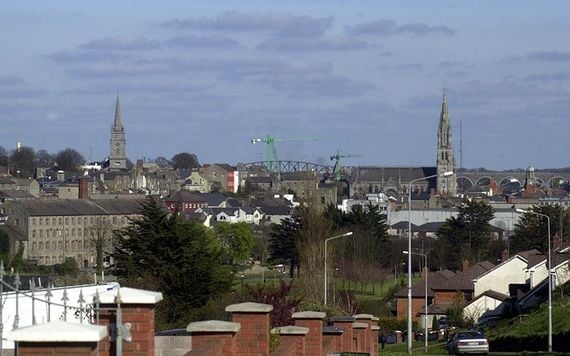While the well-known saying states that there are lies, damn lies, and statistics, the truth is that without bad actors deliberately misreading the numbers in order to mislead the public, the last statement does not hold true.
So it was no surprise that when the latest census figures for Ireland were published the Catholic Church’s enemies were out proclaiming the demise of the institution, saying that it was in “terminal decline.”
The reason for their unbridled glee was the headline figure that suggested that the proportion of the population who reported themselves to be Roman Catholic fell by 10 percent to 69 percent between 2016 and 2022.
But behind the hyperbole and facile analysis, the truth told a different story.
But first, a lesson that is taught in statistics 101, namely the golden rule that must be followed in interpreting numbers is the principle of comparing like with like in order to draw valid conclusions and make fair comparisons. Slight differences in emphasis in either the question or the answer options can have a major impact on the responses.
In the recent census, the traditional wording used in previous years was changed. The 2016 census form asked, “What is your religion?” It listed “Roman Catholic” as the first option and “no religion” as the last.
However, the 2022 form asked, “What is your religion, if any?” and put “no religion” as the first option, followed by “Roman Catholic.”
Commentators suggest that the inclusion of “if any” in the question and putting “no religion” as the first option will have “nudged” people to answer in a particular way, making comparisons with previous years practically meaningless. The upshot is that the results of the census showed that there were 3,515,861 Catholics in 2022, compared to 3,696,644 in 2016.
According to the results, the proportion of Catholics showed significant regional variation. Co Mayo, located in the west of Ireland, had the highest percentage, with approximately 80 percent of the population identifying as Catholic.
In contrast, Dublin city had the lowest proportion, with around 53 percent highlighting the diversity of religious affiliation across the country.
So there is no doubt that the number of practicing Roman Catholics has dropped, but it is unlikely as dramatic a fall over such a relatively short period. Most likely a large part of those numbers relate to the diversification of Irish society, and specifically the reduction of Polish people, who are overwhelmingly Catholic, living here.
The truth is we will have to wait five years from now before we can identify a trend. Nonetheless, 69 percent identifying as Catholic is an impressive figure to work with, and hardly an indication of terminal decline.
Rather than viewing it as a sign of irreversible decline, these numbers present an opportunity for the church to leverage its substantial support and play a more influential role in society. This data should serve as a source of motivation for the church leadership to actively engage with society, becoming a compelling and compassionate voice that addresses the needs and concerns of its followers and the broader population as well as challenging the anti-Catholicism narrative that is gaining traction in Ireland.
The census also threw up some interesting discussion points around the sustainability of our county system. Dating back to the 13th and 16th centuries, counties still hold a special place in people's hearts. They evoke strong feelings of loyalty and carry great significance, both culturally and in the field of sports.
However, they suffer from inefficiencies, imbalances, and an urgent requirement for modernization. Dublin is by far the largest county population-wise with 1,458,540 while Leitrim, with just 35,199 inhabitants, is the smallest.
In other words, Dublin has 41 times more people living in it. Little wonder then that in the GAA All-Ireland football competition, they win so regularly.
Instead of acknowledging the unfairness of it, all people seem to be happy to literally live in the GAA bubble of county boundaries arbitrarily drawn by the English over 800 years ago. The GAA competitive landscape would be transformed by a bit of the American NFL pragmatism where weaker teams are provided with a chance to rebuild and improve their prospects for success through the draft system.
Dr. Eoin O'Malley, a professor of politics at DCU, has suggested a return to the older Celtic regions in rural counties. For example, he advocates for the consolidation of areas such as Cavan, Monaghan, and Leitrim into a unified region known as Breffni. According to O'Malley, this realignment would offer a more logical division of territories.
Furthermore, the current county system has posed limitations on the development of towns and cities that straddle boundaries. For instance, my hometown of Drogheda, located in Co Louth, is unable to control and manage expansion southward into its natural hinterland in neighbouring Co Meath due to it being a different county.
Houses can be built but an overall cohesive plan to address and administer a growing region, indeed turn it into a City, is not currently possible. Such constraints hinder the growth and potential of these areas. The results from the census should provide a catalyst for a rethink, but will that happen?
Not likely I’m afraid. As O’Malley did a round of radio interviews, the frequent refrain to his calls for reorganization of the administrative counties was “when hell freezes over.”

Drogheda, Co Louth. (RollingNews.ie)
The message was clear — do not get between an Irishman or Irishwoman and their deeply held traditions.
No matter that weaker counties continue to take a hammering in sports, or that smaller counties and communities have no representation in our Dáil, or indeed that administratively the county management system is more suitable to a time and a place long since gone.
Because as the census shows, in politics, religion, and sport, despite the statistics, there are lies, damn lies, and age-old shibboleths.
*This column first appeared in the June 7 edition of the weekly Irish Voice newspaper, sister publication to IrishCentral. Michael O'Dowd is brothers with Niall O'Dowd, founder of the Irish Voice and IrishCentral.




Comments